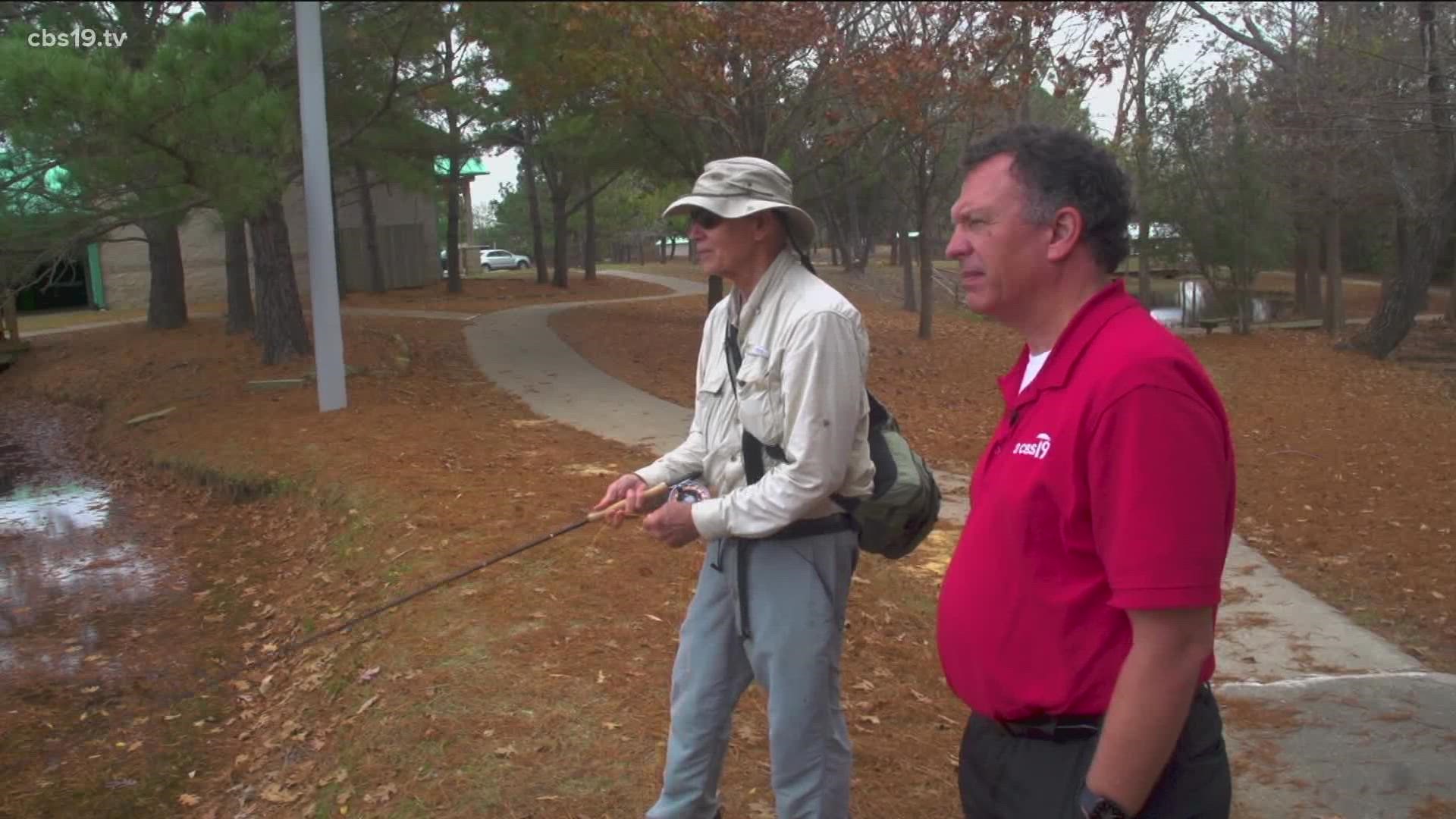ATHENS, Texas — Go fishing and you never know who you might meet. A recent trip to the Texas Freshwaters Fisheries Center in Athens led to meeting Harold Hosack, who was fly fishing with a prince nymph.
“You can fly fish for a lot of things," said Hosack. "Trout are the things you always see, you know 'A River Runs Through It.' That’s what people think about when people think about fly-fishing.”
Hosack was referring to the 1992 movie A River Runs Through It, which focuses on a family from Montana that is devoted to fly fishing. Although he's not in Montana, Harold loves fly fishing for trout in the ponds at the Texas Freshwaters Fisheries Center.
“This is convenient for fly fishing because uh, there’s a lot of area with not a lot of trees around it so you don’t always catch the trees, when you’re flying fishing you use a lot of space to cast the line," explained Hosack.
Hosack requires space to cast his fly rod, but also needs space for himself after retiring. He is 80 years old and worked as theoretical physicist for Texas Instruments in Dallas, where he spent years in the research labs developing integrated circuit technology. Additionally, he led a team that worked on something you use every day
"I worked on the very beginning of electronic imaging, the phone or the imager that’s in your camera, it’s actually an integrated circuit," said Hosack. "It’s not film anymore, it’s an integrated circuit and I worked on the development of those integrated circuits.”
Not only did Hosack work on the integrated circuitry that is within the phones and cameras that we use everyday, but he took that research to new heights with the Hubble telescope by working on the imagers that went into the telescope itself. The Hubble telescope which has changed our understanding of space since its 1990 launch. And before Hubble came the Galileo mission.
“There was a program called Galileo, that went to Jupiter and the group that I ran, we built the imager, there was only one imager in that system and we built that system," said Hosack.
In 1989, NASA launched the Galileo probe. Its aim was to study Jupiter and its moons, but it became the first spacecraft to visit asteroids. Galileo took observations of a comet fragment colliding with Jupiter, and as it flew by Venus it sent back infrared images of the planet’s clouds. These images helped realize that Jupiter is 318 times larger and 1,400 times more voluminous than Earth. This discovery is due in part to Harold, but he doesn't want the credit.
“Theoretical physicists don’t do anything; they just think about it," said Hosack. “Part of it is, I’m outside and active because I’m the way I am but I’m the way I am because I’m outside and active."
Harold wants to stress the fact that the imaging devices that his group built are only a small, but critical, part of the camera used on those missions. The space telescope imagers were replaced with upgraded sensors by someone else in the first repair mission that fixed the mirror problems. There have been several upgrades since.

